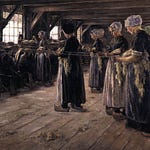Thank you for all of the great questions! Here’s part one of this month’s Q&As. In this episode we talk raising ducks, chickens, electrolytes, adaptogens, and more (including what to watch out for if you’re buying medicinal mushroom blends).
These Q&As are offered as a perk to paid members, but I’m opening up part one to all so you can decide for yourself if you think you might like to sign up for a paid subscription. Part two includes conversation around salt, snacking ideas for kids, sheep, meat rabbits, sunbathing, milk cows, and a myriad of other things that find their way into my brain and out of my mouth. I hope there’s some good little bits in here for all.
Part two has been sent to all paid subscribers.
Follow up resources to this portion of the Q&As:
A great foundational book to get you learning more about adaptogens.
Electrolyte blend we use in 2 litres water: 1/2 tsp salt, 1/4 tsp potassium (we only add this if we think we need it), a magnesium capsule (not all the time).
This is the electrolyte Troy buys as a treat every now and then.
This is a great article that expands on what I touched on regarding medicinal mushroom mycelium vs. the fruiting body. Most of what is sold commercially by the big mushroom purveyors is a blend of grain substrate and mycelium. Not at all ideal.
And, below, is the picture of my mite-free chicken house thanks to the wonderful spiders therein.












